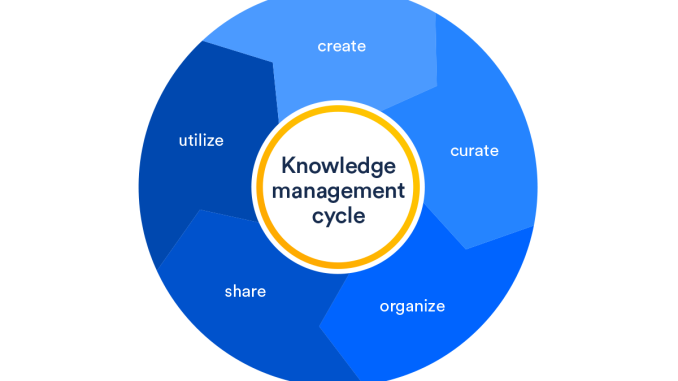
Knowledge management is a critical process for organizations and individuals alike in the digital age. Effectively organizing and utilizing information can lead to better decision-making, innovation, and improved productivity. Here’s a guide on how to manage knowledge efficiently:
1. Define Your Objectives:
- Start by identifying the goals and objectives of your knowledge management efforts. What do you hope to achieve? Are you looking to improve decision-making, foster innovation, enhance customer service, or something else?
2. Identify Key Knowledge Sources:
- Determine the sources of knowledge within your organization or your personal life. This can include documents, databases, experts, external resources, and even tacit knowledge (knowledge that resides in people’s minds).
3. Capture and Document Knowledge:
- Create a systematic method for capturing and documenting knowledge. This might involve creating databases, using document management systems, or establishing knowledge-sharing processes.
4. Organize Information Effectively:
- Develop a structured taxonomy or classification system for organizing your knowledge. Ensure that information is categorized logically and consistently. Consider using metadata to tag content for easy retrieval.
5. Establish a Central Repository:
- Create a centralized repository for storing and accessing knowledge. This can be an intranet, a shared drive, a cloud-based platform, or a personal knowledge management system such as note-taking apps or digital libraries.
6. Implement Search and Retrieval Tools:
- Invest in search and retrieval tools that make it easy to find specific pieces of information quickly. This might include robust search engines, indexing, and filtering capabilities.
7. Encourage Knowledge Sharing:
- Foster a culture of knowledge sharing within your organization or network. Encourage employees or peers to share their expertise, experiences, and insights. Recognize and reward knowledge sharing efforts.
8. Create Knowledge Documentation Standards:
- Establish documentation standards to ensure consistency and clarity in the information you capture. This can include templates, style guides, and best practices for documenting knowledge.
9. Train and Educate:
- Provide training and education to your team or community on knowledge management best practices. Make sure everyone understands the importance of knowledge sharing and how to use the tools effectively.
10. Implement Version Control: – If you’re managing documents or digital content, implement version control mechanisms to track changes and revisions. This helps prevent confusion and ensures that users always access the latest information.
11. Foster Collaboration: – Use collaborative tools and platforms to facilitate knowledge sharing and teamwork. Tools like wikis, project management software, and collaborative document editing platforms can promote collaboration.
12. Prioritize Security and Privacy: – Safeguard sensitive information by implementing robust security measures and access controls. Ensure that only authorized individuals have access to confidential data.
13. Regularly Update and Maintain: – Knowledge management is an ongoing process. Regularly review, update, and maintain your knowledge repositories to ensure accuracy and relevance.
14. Measure and Analyze: – Establish key performance indicators (KPIs) to measure the effectiveness of your knowledge management efforts. Analyze usage patterns, search queries, and user feedback to refine your knowledge management strategy.
15. Encourage Feedback and Continuous Improvement: – Encourage users to provide feedback on the knowledge management system. Use this feedback to make continuous improvements, address pain points, and enhance usability.
16. Embrace Technology: – Leverage technology and automation to streamline knowledge management processes. AI-driven chatbots, data analytics, and knowledge graphs can help in organizing and utilizing information effectively.
17. Promote a Learning Culture: – Encourage a culture of continuous learning and adaptability. Recognize that knowledge is constantly evolving, and individuals and organizations must keep up with new information and trends.
18. Share Success Stories: – Share success stories and examples of how effective knowledge management has led to positive outcomes. This can motivate others to actively engage in knowledge sharing.
19. Adapt to Change: – Be flexible and adaptable as technologies and information landscapes evolve. Embrace emerging tools and practices to stay relevant and effective in knowledge management.
20. Continuously Evolve: – Knowledge management is not a static process; it should evolve with changing needs and technologies. Regularly assess your knowledge management strategy and make adjustments as necessary.
Effective knowledge management is an ongoing effort that can greatly enhance an organization’s or an individual’s ability to harness the power of information. By following these principles and best practices, you can organize and utilize information efficiently, leading to better decision-making, innovation, and overall success.